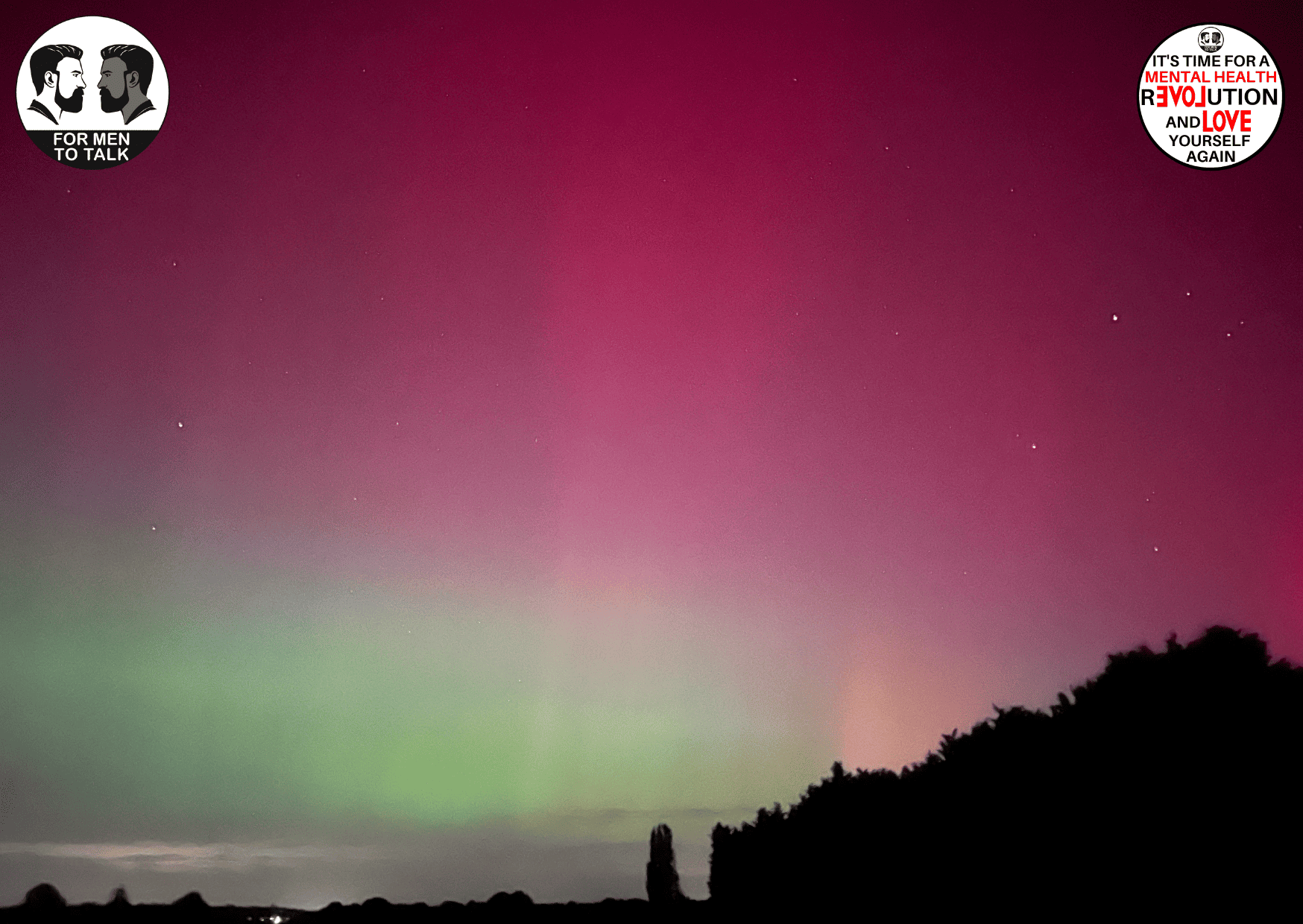Seeing the Northern Lights for the first time

By Luke Newman, founder of ‘For Men To Talk’
At 43 years old, I finally experienced something I’d always dreamed of — seeing the Northern Lights. The best part was sharing that moment with my youngest children. It was a magical experience, and it made me curious about why we could see them here in England.
The Northern Lights, or auroras, are natural light displays that happen when charged particles from the sun collide with gases in the Earth’s atmosphere. These collisions occur around the Earth’s magnetic poles. When the particles hit the gases, they release energy in the form of light, creating those stunning colours we see in the sky. The colours can vary, showing shades of green, pink, red, yellow, blue, and violet.
Auroras are usually seen in areas close to the North and South Poles, like Norway, Sweden, and Canada in the Northern Hemisphere. But, sometimes, they appear much farther from the poles. This happens when there’s a strong geomagnetic storm, which is caused by intense activity on the Sun, such as solar flares or coronal mass ejections. These storms send a large number of charged particles toward Earth, affecting our magnetic field.
Recently, the Northern Lights were visible across the UK and even parts of Europe because of an intense geomagnetic storm, classified as a G5. This is the highest level on the 1-5 scale for such storms. When a G5 storm hits, the auroras can extend far beyond their usual range, allowing people in places like England to witness their beauty.
The reason you could see the Northern Lights through your mobile phone but not with your naked eye is likely due to the sensitivity of the camera sensor compared to the human eye.
- Low Light Sensitivity: Mobile phone cameras, especially in night mode, are designed to capture low-light environments by enhancing the brightness and exposure. They can detect faint light that might not be visible to the naked eye.
- Long Exposure Capability: Cameras often use a longer exposure time, which means they can gather more light over a longer period. This reveals details and colours that our eyes, which are adapted for short-term viewing, may miss.
- Human Eye Limitations: The human eye is less sensitive to dim light, especially in colours like green, blue, or purple, which are common in auroras. When the aurora is faint, it may appear as a grayish or barely visible glow to the naked eye.
Seeing the Northern Lights reminded me of the wonders of nature and the importance of taking time to appreciate them, especially when shared with loved ones.